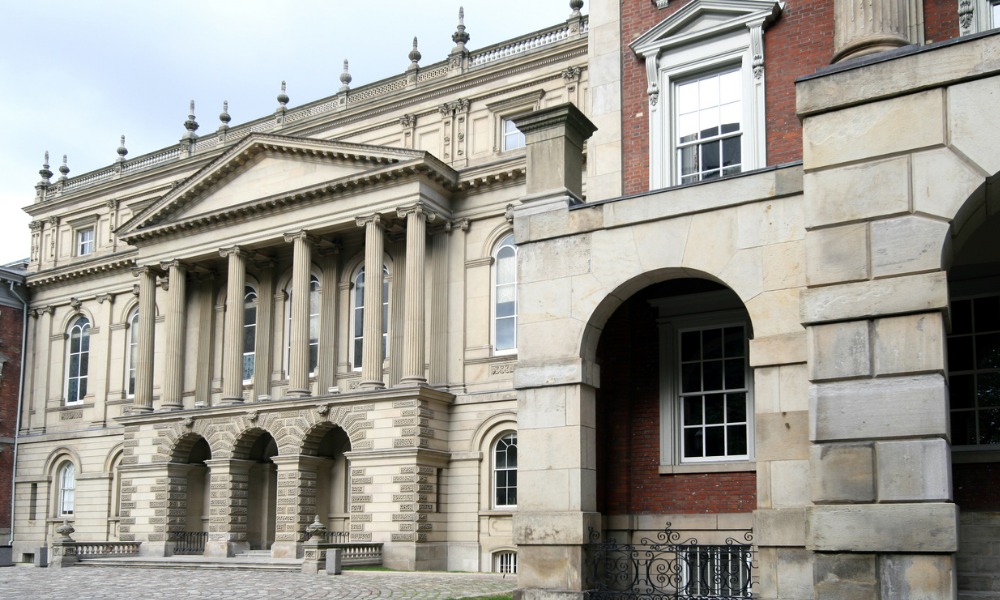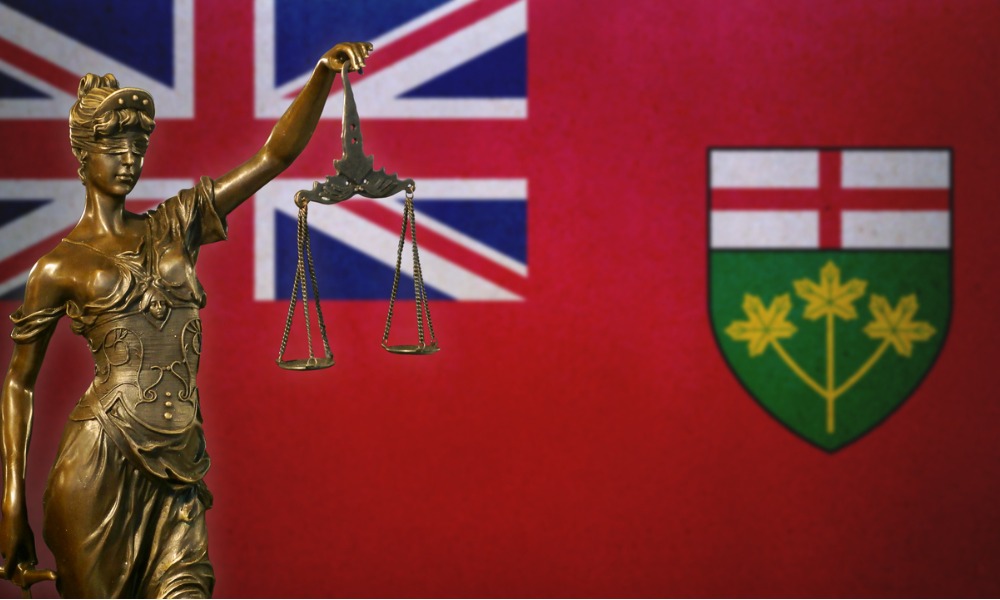OTTAWA - Two determined young lawyers, who forced the Harper government to admit Canadian troops ceased transferring prisoners to Afghan secret police because they could be tortured, say the lone case in the spotlight so far is the tip of the iceberg.
Paul Champ, Ottawa counsel for Amnesty International and the B.C. Civil Liberties Association, says Canada’s foreign affairs department had been gathering allegations of torture by Afghanistan’s National Security Directorate for six months before a case the Canadian Forces couldn’t ignore surfaced on Nov. 5 last year.
That case - where a Canadian monitoring officer from the Foreign Affairs Department not only heard first-hand allegations of beating but also found a torture cable under his chair in an Afghan detention centre - prompted a secret Canadian Forces decision to halt prisoner transfers.
But, as Champ and University of Ottawa law professor Amir Attaran discovered in documents that took them a year to obtain in a Federal Court case opposing the prisoner transfers, the foreign affairs department had already heard graphic claims of torture in interviews beginning the previous June.
“It was shocking,” Champ told Law Times as he described reports he and Attaran obtained that quoted torture and beating descriptions from 10 other detainees Canadian troops handed over to the Afghan National Security Directorate.
“Everyone is putting a lot of focus on the Nov. 5 one, and the fact he (the Canadian monitor) found the instruments of torture was pretty unbelievable. That just shows how cavalier the secret police are . . . that they wouldn’t even think to remove the tools of torture.
“Detainees had been telling Canadians that they were being tortured for six months, and nothing else had happened, so why would the Afghan secret police think that anything is going to change?”
Champ, with out-of-court assistance from Attaran, an old law school friend from the University of British Columbia, is leading an unprecedented challenge in Federal Court on behalf of Amnesty International and the B.C. Civil Liberties Association.
The two groups want a judicial review of the treatment of detainees transferred to Afghan forces by Canadians in Afghanistan, arguing the Charter of Rights and Freedoms applies to the Canadian soldiers there and also protects anyone detained by the Canadians and handed over to the Afghans.
Despite the November decision to suspend the transfers, the two human rights groups are continuing their Federal Court battle until guarantees are in place to prevent torture, and a separate request for a ruling that the Charter covers the Canadian troops and their prisoners is.
An uproar last week over disclosure by government lawyers in the Federal Court case that the Canadian Forces had secretly halted transfers overshadowed two days of hearings before Justice Anne Mactavish on the injunction application and the Charter arguments.
Developments and arguments in the case that so far have received scant public attention include chilling allegations of beating and torture from Afghans who were handed over to the Afghans by Canadian
soldiers.
They are contained in monitoring reports the government disclosed to Champ only seven days before Justice Mactavish heard arguments over the injunction application on Jan. 24.
The documents suggest the prisoners were receiving at the least a sympathetic hearing and close physical scrutiny from the foreign affairs department monitors well before the Canadian army finally halted the transfers.
A June 6 report described a detainee as sitting “with his toes curled under his feet” when Canadian monitors interviewed him.
“When he straightened his toes, it could be seen that the nails of the big toes and the one next to it were a red/orange on the top of the nail (although the new growth underneath appeared fine),” the report says. Champ interprets the entry as an implicit recognition that the detainee’s toenails had been torn off.
“General impression was that he was somewhat traumatized,” the report concludes.
Another June report quoted a detainee saying he had been hit on his feet with a cable or “big wire” and forced to stand for two days. “He showed us a mark on the back of his ankle, which he said was from the cable. [Note: There was a dark red mark on the back of his ankle],” the report says.
One of the prisoners showed the Canadian monitors scars on his legs that he said were a result of torture. He also said he had been tortured with electrical shocks. When the Canadians told the Afghans they would take his allegations up with the security police, the detainee asked them not to disclose his name, out of fear of retaliation.
At the bottom of that printed report, the monitors wrote this sentence in bold letters and underlined: “We would be grateful for further guidance from Ottawa on the desired approach/tact we should take in this matter.”
Champ and Attaran were astonished to find on the eve of the Federal Court hearings that despite those descriptions and similar evidence, the transfers continued until November. Prime Minister Stephen Harper and Defence Minister Peter MacKay have refused to say what now happens to any Afghans detained by Canadians, claiming disclosure could damage operational security.
Attaran, who is also a biologist, with degrees from UBC, Berkeley, Caltech, and Harvard, and who taught briefly at Harvard University alongside Liberal MP Michael Ignatieff, said the government demonstrated a “lack of respect for the court” by keeping the decision to halt transfers secret until only two days before the injunction hearing.
“They deliberately kept from us, and more distressingly from the court, the fact that they had known about it since early December,” he tells Law Times.
Attaran asked Champ, who practises labour and human rights law at Raven Cameron Ballantyne & Yazbeck LLP, to join him on the detainee issue in the spring of 2006. The old friends had earlier joined forces supporting the Brazilian government in a successful legal battle against the U.S. over high prices for AIDS drugs.
Attaran called Champ after he discovered the existence of a secret Canada-Afghanistan agreement on prisoner transfers signed by Chief of Defence Staff Gen. Rick Hillier. The discovery was made while Attaran was researching for a lecture as part of a Law Society of Upper Canada panel.
He says their first real grasp of torture implications came in December that year, when he and Champ spent Christmas poring over “piles” of documents Attaran obtained through the Access to Information Act.
“From that, we could for the first time really discover what was going on on the ground,” he says. “We got detainee transfer records, detainee transfer logs, interrogation records of detainees. We were able to piece together what had been happening to some of them; that they were being fingerprinted and photographed by Canadian authorities and then handed over to Afghan authorities.”
Paul Champ, Ottawa counsel for Amnesty International and the B.C. Civil Liberties Association, says Canada’s foreign affairs department had been gathering allegations of torture by Afghanistan’s National Security Directorate for six months before a case the Canadian Forces couldn’t ignore surfaced on Nov. 5 last year.
That case - where a Canadian monitoring officer from the Foreign Affairs Department not only heard first-hand allegations of beating but also found a torture cable under his chair in an Afghan detention centre - prompted a secret Canadian Forces decision to halt prisoner transfers.
But, as Champ and University of Ottawa law professor Amir Attaran discovered in documents that took them a year to obtain in a Federal Court case opposing the prisoner transfers, the foreign affairs department had already heard graphic claims of torture in interviews beginning the previous June.
“It was shocking,” Champ told Law Times as he described reports he and Attaran obtained that quoted torture and beating descriptions from 10 other detainees Canadian troops handed over to the Afghan National Security Directorate.
“Everyone is putting a lot of focus on the Nov. 5 one, and the fact he (the Canadian monitor) found the instruments of torture was pretty unbelievable. That just shows how cavalier the secret police are . . . that they wouldn’t even think to remove the tools of torture.
“Detainees had been telling Canadians that they were being tortured for six months, and nothing else had happened, so why would the Afghan secret police think that anything is going to change?”
Champ, with out-of-court assistance from Attaran, an old law school friend from the University of British Columbia, is leading an unprecedented challenge in Federal Court on behalf of Amnesty International and the B.C. Civil Liberties Association.
The two groups want a judicial review of the treatment of detainees transferred to Afghan forces by Canadians in Afghanistan, arguing the Charter of Rights and Freedoms applies to the Canadian soldiers there and also protects anyone detained by the Canadians and handed over to the Afghans.
Despite the November decision to suspend the transfers, the two human rights groups are continuing their Federal Court battle until guarantees are in place to prevent torture, and a separate request for a ruling that the Charter covers the Canadian troops and their prisoners is.
An uproar last week over disclosure by government lawyers in the Federal Court case that the Canadian Forces had secretly halted transfers overshadowed two days of hearings before Justice Anne Mactavish on the injunction application and the Charter arguments.
Developments and arguments in the case that so far have received scant public attention include chilling allegations of beating and torture from Afghans who were handed over to the Afghans by Canadian
soldiers.
They are contained in monitoring reports the government disclosed to Champ only seven days before Justice Mactavish heard arguments over the injunction application on Jan. 24.
The documents suggest the prisoners were receiving at the least a sympathetic hearing and close physical scrutiny from the foreign affairs department monitors well before the Canadian army finally halted the transfers.
A June 6 report described a detainee as sitting “with his toes curled under his feet” when Canadian monitors interviewed him.
“When he straightened his toes, it could be seen that the nails of the big toes and the one next to it were a red/orange on the top of the nail (although the new growth underneath appeared fine),” the report says. Champ interprets the entry as an implicit recognition that the detainee’s toenails had been torn off.
“General impression was that he was somewhat traumatized,” the report concludes.
Another June report quoted a detainee saying he had been hit on his feet with a cable or “big wire” and forced to stand for two days. “He showed us a mark on the back of his ankle, which he said was from the cable. [Note: There was a dark red mark on the back of his ankle],” the report says.
One of the prisoners showed the Canadian monitors scars on his legs that he said were a result of torture. He also said he had been tortured with electrical shocks. When the Canadians told the Afghans they would take his allegations up with the security police, the detainee asked them not to disclose his name, out of fear of retaliation.
At the bottom of that printed report, the monitors wrote this sentence in bold letters and underlined: “We would be grateful for further guidance from Ottawa on the desired approach/tact we should take in this matter.”
Champ and Attaran were astonished to find on the eve of the Federal Court hearings that despite those descriptions and similar evidence, the transfers continued until November. Prime Minister Stephen Harper and Defence Minister Peter MacKay have refused to say what now happens to any Afghans detained by Canadians, claiming disclosure could damage operational security.
Attaran, who is also a biologist, with degrees from UBC, Berkeley, Caltech, and Harvard, and who taught briefly at Harvard University alongside Liberal MP Michael Ignatieff, said the government demonstrated a “lack of respect for the court” by keeping the decision to halt transfers secret until only two days before the injunction hearing.
“They deliberately kept from us, and more distressingly from the court, the fact that they had known about it since early December,” he tells Law Times.
Attaran asked Champ, who practises labour and human rights law at Raven Cameron Ballantyne & Yazbeck LLP, to join him on the detainee issue in the spring of 2006. The old friends had earlier joined forces supporting the Brazilian government in a successful legal battle against the U.S. over high prices for AIDS drugs.
Attaran called Champ after he discovered the existence of a secret Canada-Afghanistan agreement on prisoner transfers signed by Chief of Defence Staff Gen. Rick Hillier. The discovery was made while Attaran was researching for a lecture as part of a Law Society of Upper Canada panel.
He says their first real grasp of torture implications came in December that year, when he and Champ spent Christmas poring over “piles” of documents Attaran obtained through the Access to Information Act.
“From that, we could for the first time really discover what was going on on the ground,” he says. “We got detainee transfer records, detainee transfer logs, interrogation records of detainees. We were able to piece together what had been happening to some of them; that they were being fingerprinted and photographed by Canadian authorities and then handed over to Afghan authorities.”







